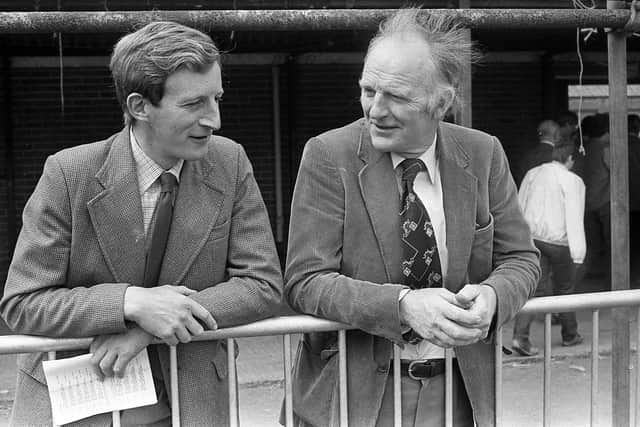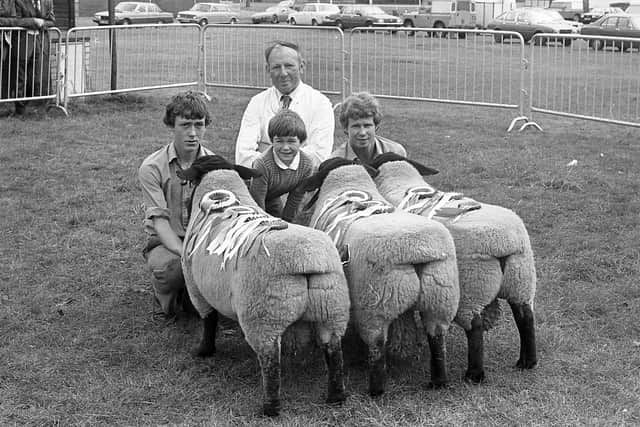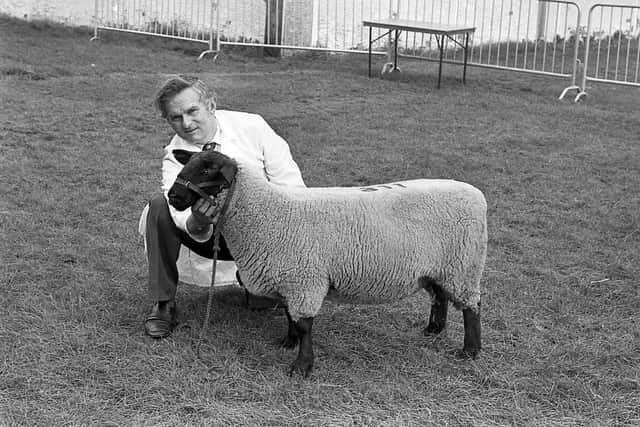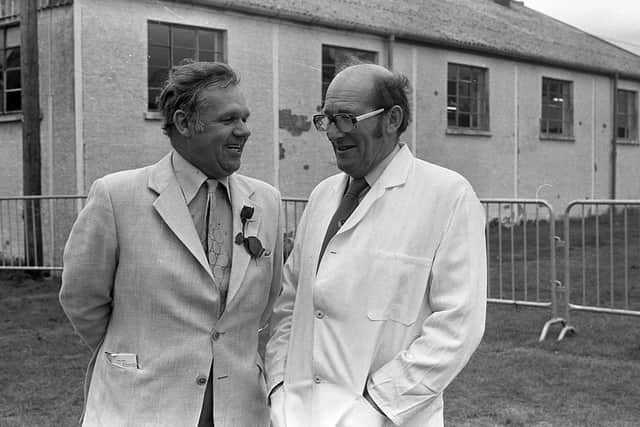Bygone Days: Ulster Texel is ‘most valuable sire’ to be bought in UK
and live on Freeview channel 276
Although the purchase price had not been disclosed the real value of the three-shear ram, Annan Double Diamond, which had been bred in France, was proven at a big sale in Lanark when 12 of his ram lambs averaged £1,465 to a top of £4,500, “the highest price paid for a Texel in the British Isles”.
Some high priced ewe lambs, sired by Double Diamond in Scotland were purchased at Lanark by breeders from Northern Ireland.
Advertisement
Advertisement
The shrewd Ulster breeders who had bought Double Diamond were named David Heenan from Newcastle, Robert Mulligan from Banbridge, Robert Gamble from Bangor and Reggie Annett from Kilkeel.


During this week in 1978 Double Diamond was running with several pure-bred Texel ewes on a Co Down farm with other ewes which had been purchased in France.
The sire was bought from a group of prominent Scottish breeders who had used him successfully with an agreement that he must go back to Scotland after his use in Northern Ireland.
David Heenan, who had just returned from Scotland, told Farming Life that after the Lanark sales where Double Diamond’s progeny was in such a tremendous demand, it was doubtful if the ram could have been bought for Northern Ireland.
Advertisement
Advertisement
“We are lucky to get him – in fact it was just in time,” David commented.


Many Scottish breeders were disappointed at having “missed” him and had already indicated their intention to seek some of his progeny in Northern Ireland in 1979.
Apart from Double Diamond’s male progeny his ewe lambs also made high prices at Lanark.
Mr Heenan, on behalf of Mr Jim Scott, Ballynahinch, purchased six Texel ewe lambs to a top price of £2,350.
Advertisement
Advertisement
Other Texel ewe lambs were bought by David Meharg from Bangor (£1,200) and Robert Gamble (£800).


Commenting on the high prices for ewe lambs Mr Heenan pointed out that he could have bought Texel triplets at the Highland Show for £500 each – and one of them made £1,500 at Lanark. Grading-up ewes were sold as high as £1,500.
Farming Life commented: “Texels claimed to be the ‘Charolais’ of the sheep world, have increased popularity since the breed won a big carcase competition recently in England.
“Breeders are aiming to form a Northern Ireland Sheep Breeders’ Club in the near future.
Advertisement
Advertisement
“The pioneer of the breed in Northern Ireland is Norman Wallace of Lylehill, Templepatrick, who recently, as reported in Farming Life, paid 1,200 guineas for a Texel ram at Blessington, Co Wicklow.”


UFU CONCERN ON DECLINE OF BEEF BREEDING HERDS
Commenting on the decline of the Ulster beef breeding herd - the national herd had fallen some 20 per cent in the previous three years to its present level of 262,000 cows, reported Farming Life - Mr A N Bailie, chairman of the Ulster Farmers’ Union cattle and sheep committee, said: “I have been concerned for some time about the supply of store cattle and with replacement heifers also decreasing there is little prospect of any change in the near future.
“The supply from Eire is also more likely to decrease than rise and because of the brucellosis eradication programme in Eire there was likely to be a buoyant demand for Friesian heifers in the south for some years ahead and this will have an effect on numbers and type of store cattle coming forward.”
Mr Bailie said that on the lowland farms the position of beef cows compared with other enterprises had worsened due to the removal of cow and calf subsidies.
Advertisement
Advertisement
He said: “Already there is some evidence of a swing in the balance of the trade towards the store producer and this should help to assist confidence.”
Mr Bailie said cow numbers had been fairly well maintained in the disadvantaged areas, but there was considerable scope for expansion of the herds in these areas.
The downward trend in the size of the herd as a whole heavily underlined the need of the industry for expanding the production of calves in the disadvantaged areas, he said.